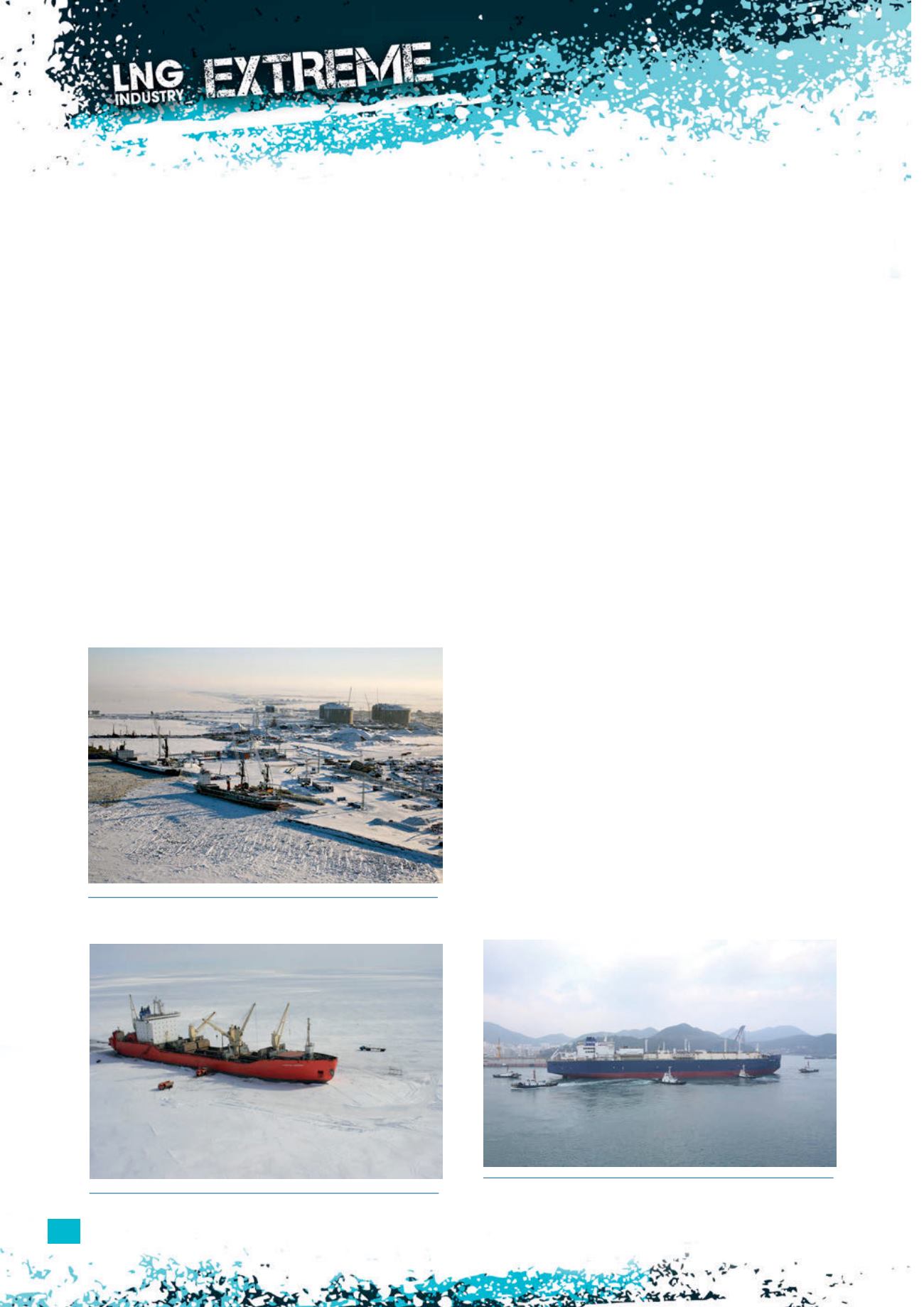
36
With all of this to consider, the actual gas extraction
and processing seems somehow less challenging than the
logistics associated with delivering the LNG to European
and Asian markets. The LNG carriers and condensate
tankers will have to use the Northern Sea Route (NSR),
which is thick with ice for approximately nine months per
year. The vessels have to ensure safe, regular, and reliable
transportation year-round.
The number of transits during the open water season
(from July to November) along the NSR has increased
steadily from four vessels in 2010 to 71 vessels in 2013.
However, the traffic has remained static since then, at
approximately 40 ships per year.
In August 2010, the largest commercial gas condensate
shipment (71 000 t) was successfully carried out by
Novatek using the chartered tanker,
SCF Baltica
. In 2011,
Novatek was the primary user of the NSR, shipping nine
cargoes totalling more than 600 000 t of condensate from
Murmansk to Asia. On one occasion, it used the Suezmax
tanker,
SCF Vladimir Tikhonov
– the largest laden tanker to
transit the NSR. The number of large gas condensate
shipments through the NSR from 2010 (20 voyages) has
provided the necessary data to evaluate the feasibility of
using the NSR to ship LNG and gas condensate directly to
Asia during the summer months. By contrast, until today,
only two conventional LNG carriers have transited the NSR
during the open water navigation period in 2012 and 2013,
escorted safely by Russian nuclear ice-breakers.
The shipping side of the project
With the benefit of having this knowledge as a starting
point, and using some feedback from projects operating
year-round in the Barents Sea and Kara Sea (Varandey,
Prirazlomnoye, Dudinka) as a reference, the project’s
objective was to secure year-round export of LNG and
condensate (approximately 220 LNG cargoes per year,
when full production of three trains is reached).
Thus, the project’s shipping team had to consider the
following elements:
The development of an Arc7 ice-breaking LNG carrier
fleet, which would allow year-long shipments on an
independent basis (i.e. without ice-breaker assistance,
except for extreme or emergency situations) through
ice-covered areas towards Europe and, during summer,
using the NSR towards Asia.
The use of transshipment terminals for deliveries to
markets beyond the economical performance of the
ice-breaking LNG carriers. LNG cargoes would be
transferred from the Arc7 ice-breaking LNG carriers to
conventional LNG carriers, which would then deliver to
the final markets.
Using project marketing assumptions and simulations
for years of mild to severe ice conditions, the required total
fleet to export the LNG and condensates during the
plateau production of the plant (16.5 million tpy) was
determined to be:
15 Arc7 ice-breaking LNG carriers of 172 km
3
.
11 – 12 conventional LNG carriers (non ice-breaking, and
with smaller ice-class notation (ex: Arc4)), ranging from
155 km
3
to 165 km
3
.
Two Arc7 ice-breaking condensate tankers of 57 km
3
.
Figure 1.
The completed marine offloading facility (MOF).
Figure 3.
Launching of the first Arc7 ice-breaking LNG carrier at
Daewoo Shipbuilding & Marine Enginering’s (DSME) shipyard
(January 2016).
Figure 2.
Unloading onto ‘fast’ ice offshore at Sabetta, Russia,
with
Kapitan Danilkin – SA15
.


